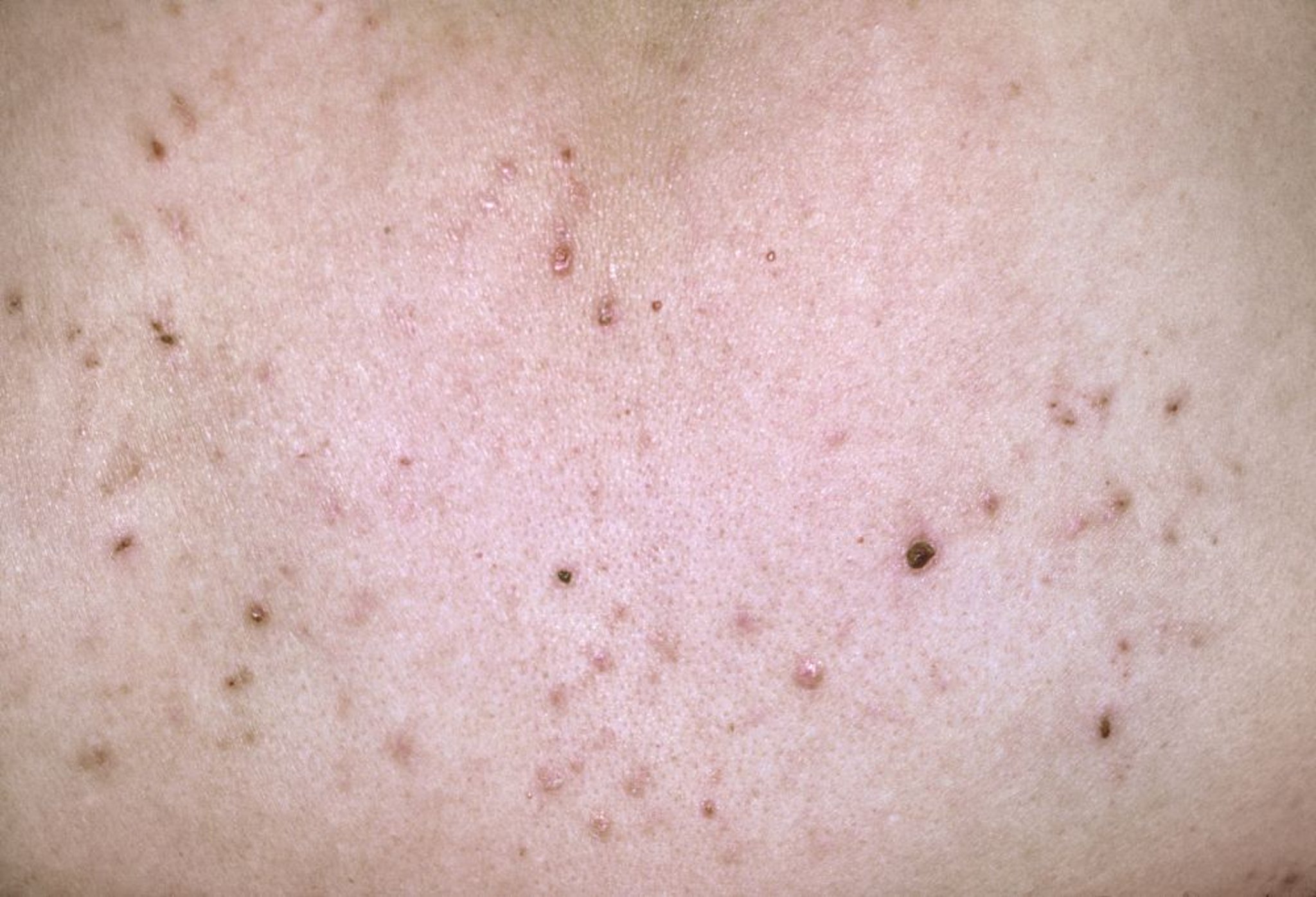Topic Resources
Pityriasis lichenoides has distinct acute and chronic forms, which are usually distinct entities; however, lesions may evolve from the acute to the chronic form. The acute form typically appears in children and young adults, with crops of asymptomatic chickenpox-like lesions that typically resolve, often with scarring, within weeks to months. Lesions that appear erythematous on light skin may appear more violaceous (purple) or brown on dark skin.
Antibiotics (eg, tetracycline, erythromycin) or phototherapy may help.Antibiotics (eg, tetracycline, erythromycin) or phototherapy may help.
DR P. MARAZZI/SCIENCE PHOTO LIBRARY
Image courtesy of Karen McKoy, MD.
The chronic form of pityriasis lichenoides initially manifests as flatter, reddish brown, scaling papules that may take months or longer to resolve.
Diagnosis of Pityriasis Lichenoides
Clinical evaluation
Sometimes biopsy
Diagnosis of pityriasis lichenoides is based on clinical appearance and distribution.
Biopsy is done when clinical findings are inconclusive.
Differential diagnosis of pityriasis lichenoides includes the following:
Hypopigmented mycosis fungoides (a form of cutaneous T-cell lymphoma)
Treatment of Pityriasis Lichenoides
Various topical and oral treatments
Treatment of pityriasis lichenoides is often ineffective, but sunlight, topical corticosteroids, topical tacrolimus, oral antibiotics, phototherapy, and immunosuppressants have been used with varying success (Treatment of pityriasis lichenoides is often ineffective, but sunlight, topical corticosteroids, topical tacrolimus, oral antibiotics, phototherapy, and immunosuppressants have been used with varying success (1).
Treatment reference
1. Bowers S, Warshaw EM: Pityriasis lichenoides and its subtypes. J Am Acad Dermatol 55:557–572, 2006. doi: 10.1016/j.jaad.2005.07.058
Drugs Mentioned In This Article




